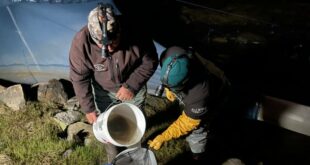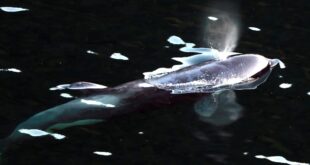Bill S-5 was passed by the Senate and given royal assent this week.

For decades, researchers have relied on animals to test whether chemicals are toxic to humans.
But science has developed alternatives, and a new Canadian law will require them to move in those directions.
This week, Bill S-5 was passed by the Senate and given royal assent. It includes language that brings Canada closer to “modernized toxicity testing,” according to a Windsor researcher who helped shape the legislation.
Charu Chandrasekera says laboratories of the future will be forced to turn to other methods to determine whether chemicals are safe — instead of using rats, mice and dogs.

For decades, researchers have relied on animals to test whether chemicals are toxic to humans. But science has developed alternatives, and a new Canadian law will require them to move in those directions.
She was in Ottawa to witness the legislation receive royal assent.
For the past four years, Chandrasekera has led the University of Windsor’s Canadian Centre for Alternatives to Animal Methods.
“Fortunately, the world is witnessing a global shift, embracing a versatile toolbox full of 21st-century technologies like organ-on-a-chip, 3D bioprinted tissue, and computational models to emulate human biology in a petri dish,” she said.
Chandrasekera refers to the new law as “landmark legislation” and says Canada is now primed to leap forward into a new era of research and innovation.
She spoke with Windsor Morning host Nav Nanwa. Here’s part of that conversation.
What kind of research will be affected by this new law?
It’s research involving toxicity testing. So this is where you look at chemical safety for chemicals in consumer products like paint and pesticides, household cleaners, industrial chemicals, industrial waste, effluents. All of these are tested on animals currently.
There’s a large, extensive list of animals that currently get used for this?
If you look at chemical safety testing — it’s mice, rats, guinea pigs, rabbits, dogs, pigs and even primates in some cases, but mice and rats serve as the gold standard. And dogs are the primary non-rodent species used in chemical safety testing.

In your career as a scientist, I know that you’ve done testing with animals. How did that make you feel when you were doing that?
When I was an animal researcher, I was looking at heart failure and diabetes using mostly rodent models. And at the time I believed in it. I wanted to do it for the greater good.
But quickly I learned that the insurmountable limitations of animal testing and how effective it is … 95 per cent of drugs tested to be safe and effective in animals failed in human clinical trials.
And at the same time, I went through a personal transformation where I learned about animal sentience from my cat. So combined with the scientific failures and the ethical implications of it, I walked away from it all.
What kinds of other technology are available to us to not use animals in some of these scenarios?
There are lots of different technologies now, especially over the last 15 years.
There’s been a lot of different technologies, some as simple as just a few human cells, really a few hundred human cells to a few thousand. And then there are more complex, pretty neat 21st century technologies like organ-on-a-chip and computational modelling.
We are talking about and all of these technologies.

It’s not like you take one mouse test and replace it with one human test. But this is really looking at human biology at every level, looking at your DNA and your RNA, what happens at the cellular level, what happens at your tissue and organ level.
So when you are exposed to chemicals, for example, you can develop fibrosis.
With our tissue models, we can see the development of lung fibrosis through chemicals that are toxic when you inhale them. So there are lots of different ways to integrate all of this information so you can actually capture human biology in a petri dish.
Do you find that scientists are welcoming of this idea of moving away from animals and using alternative technology?
Yes, for the most part.
There are lots of scientists who are actively involved in this. There are academic scientists, industry groups. And for some of these industries, it’s beneficial for them to do it this way because it could cost up to $6 million and take up to three years to test a single chemical fully to understand the full breadth of adverse effects on humans.
And then there are government agencies now, especially now with Health Canada and Environment Canada, under this new legislation, are required to take an active role in shifting away from animal testing.
Before this bill was made law, where did Canada sort of rank or fit when it came to this type of innovation being used on a regular basis?
Oh, I don’t know what word to use there. Pretty pathetic, I should say.
We have been really behind the European Union … and then the U.S. … we were kind of behind in Canada.
And every time I went to the EU or the U.S. to give talks on these things, people always asked me, “Why don’t Canadians care?” And I didn’t have an answer. So I’m ecstatic right now that I can actually finally say that we do care and we are on the global stage.
What did that feel like for it to be given royal assent?
It was just incredible witnessing history. This was a landmark moment. It sort of signifies the beginning of the end of animal toxicity testing in Canada.
This Q&A has been edited for length and clarity.
*****
Credit belongs to : www.cbc.ca
 Atin Ito First Filipino Community Newspaper in Ontario
Atin Ito First Filipino Community Newspaper in Ontario






